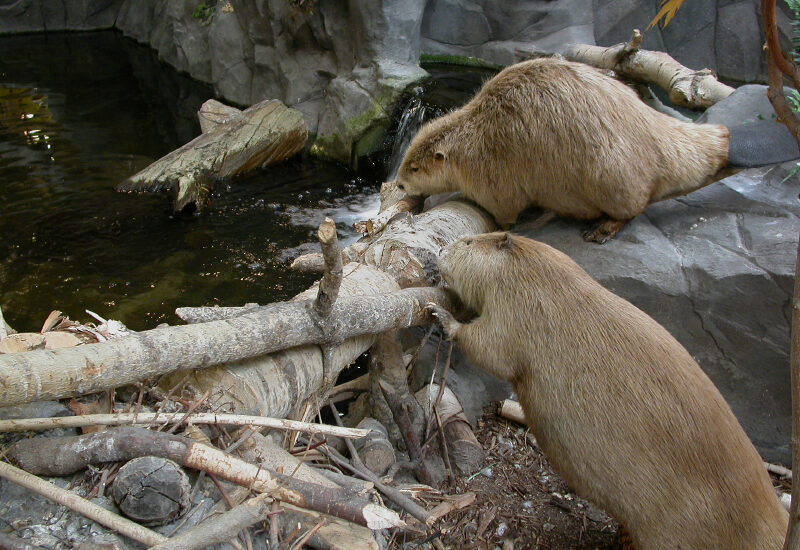A True Story of Beaver Dams, Business Reality And Leadership
- July 23, 2013
- Posted by: k-admin
- Category: People

A TRUE STORY OF BEAVER DAMS, BUSINESS REALITY AND LEADERSHIP
A vital, yet often neglected area of leadership and management is that of understanding organizational behavior; how the systems of systems that we call an organization work. What’s inside the functioning of the organizations we use and work inside every day? What drives them? Why are they the way they are? Why are some “good” and others not so much? Are there fundamental differences between commercial businesses, government, academic institutions, and others? If so, what and why? What are the dominant behaviors of organizations and how do they manifest themselves in the performance of the organization? I will address some of these questions, and others in this blog over time and begin with what I regard as an iron clad rule of organizational behavior:
Rule Number 1: All organizations work relentlessly to optimize the personal convenience, circumstances, and betterment of those in the organization and in doing so sub-optimize all other things, especially the aims of the organization and its customers.
Left to its own, uninterrupted by external factors and forces, this dynamic eventually creates a transformed organization that exists entirely for its own self promotion and further optimization of every aspect of the employees’ work environment. This applies to every organization no matter what size, from one person to thousands of employees. It is human nature imposed on the places where we all work and it’s extremely powerful and transformative. We all want things on our own terms and in our personal lives are constantly engaged in an effort to evolve our worlds to suit our deepest desires. We take that to our work place and subtly, but relentlessly impose it on our work places.
Examples abound. Think of your last experience at most government “service” centers where the public is required to obtain licenses, permits, forms, etc. Most Department of Motor Vehicles (DMV) offices come to mind. You, the customer, are the least important and most underserved component of the process at most DMVs. To begin with you have no choice in where to go for the service, you must come to that particular office, it’s a monopoly imposed by the state government. At the DMV, every part of the process is optimized for the employees. First, you must wait to wait, taking a number when you arrive. Then you wait to see someone. When you see them, the paperwork you must provide has to perfectly comply with every aspect of the system that’s been designed to make things smooth and convenient for the employees and their processes. Any imperfection in the paperwork you provide means you will be sent away to comply and return. Any requests from you that are outside the process are met with disapproval and the general demeanor of those you deal with is one of tolerance and forbearance. There is no sense that you are a “customer” or that your needs have a role in the processes and efforts of the employees. You are treated as, and are seen to be, a necessary nuisance who must be endured in whatever ways expend minimum of effort on the part of those who run the place. It is the perfect picture of a system and organization that has perfected every aspect of its daily routines in order to enhance and refine the experiences and circumstances of the employees. There are countless examples and we all experience this.
An appropriate metaphor is found in the natural world. It is in the behavior of beavers. Beavers are known for their natural trait of building dams on rivers and streams, and building their homes (known as “lodges”) in the resulting pond. Beavers also build canals to float building materials that are difficult to haul over land. They use powerful front teeth to cut trees and other plants that they use both for building and for food. In the absence of existing ponds, beavers must construct dams before building their lodges. First they place vertical poles, and then fill between the poles with a crisscross of horizontally placed branches. They fill in the gaps between the branches with a combination of weeds and mud until the dam impounds sufficient water to surround the lodge.
Beaver dams are created as a protection against predators, such as coyotes, wolves and bears, and to provide easy access to food during winter. Beavers always work at night and are prolific builders, carrying mud and stones with their forepaws and timber between their teeth. Because of this, destroying a beaver dam without removing the beavers is difficult, especially if the dam is downstream of an active lodge. Beavers can rebuild such primary dams overnight, though they may not defend secondary dams as vigorously. Beavers create a series of dams along a river. The ponds created by well-maintained dams help isolate the beavers’ home, which are created from severed branches and mud.
The lodge has underwater entrances to make entry nearly impossible for any other animal. A very small amount of the lodge is actually used as a living area. Contrary to popular belief, beavers actually dig out their dens with underwater entrances after they finish building the dams and lodge structures. There are typically two dens within the lodge, one for drying off after exiting the water, and another, drier one where the family actually lives. Beaver houses are formed of the same materials as the dams, with little order or regularity of structure.
All of this designed as a perfect environment for the purpose of enhancing the lives of the beavers and only the beavers. Given enough water, mud, water lilies to eat, and trees to chew down, the beaver colony will dam and flood everything in sight. Roads, fields, homes and everything can be inundated and the beavers will go on with their life’s work; making things better for themselves to the exclusion of all external influences. Thus it is with all organizations and their inhabitants. Without leadership that consistently reinforces the larger purpose of the organization, its customers, beavers will build their self-optimizing dams throughout your organization. They already have.
Regardless of the industry/ sector/ agency, leaders must compel and guide the organizations they lead to do better than the aforementioned examples. Only enlightened leadership can prevent beaver dams in your business or organization.
The purpose of this blog is to share my observations about organizational behavior and leadership with others. In doing so, I’ll post regularly and I ask my readers to share their thoughts and specific concerns and observations about their organizations with me. To do so, feel free to leave comments, they will be greatly appreciated.
Many thanks, Keith Stalder, #1
Copyright © 2013 Keith Stalder & Associates, LLC. All rights reserved.
